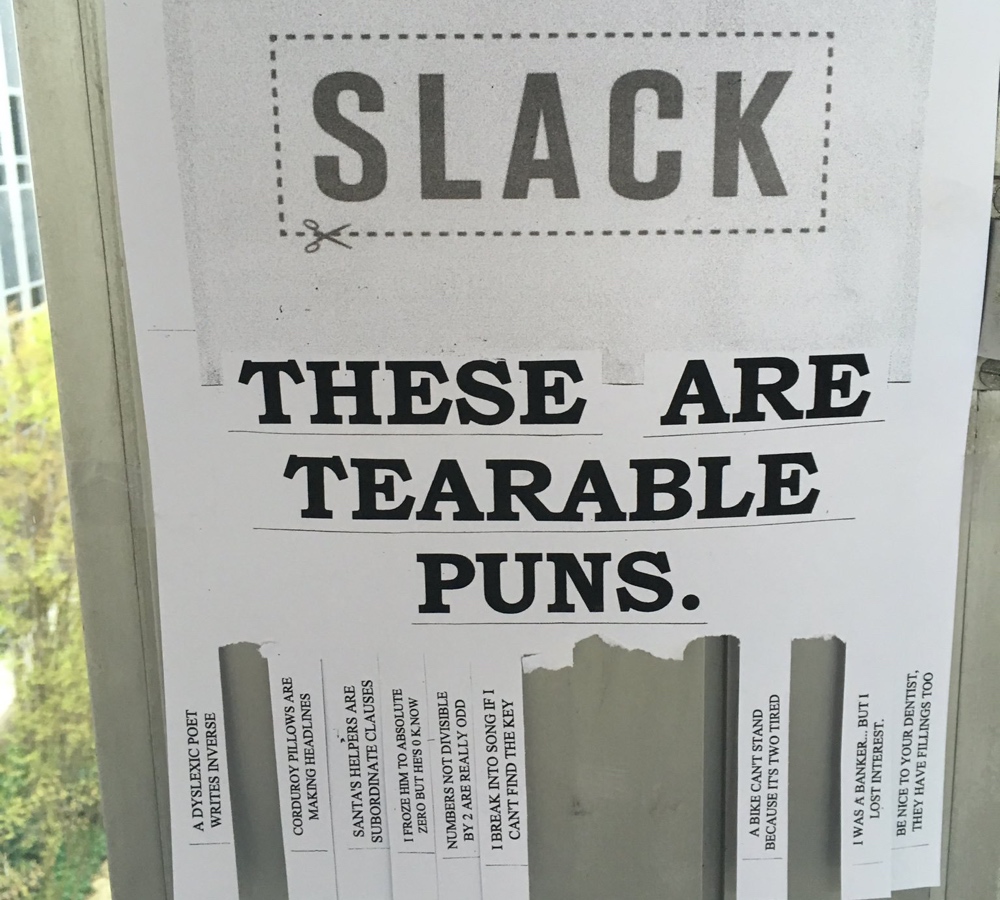One often hears that puns are bad, especially if one tells a lot of bad puns. But in our book editing classes in our publishing program, we’re taught that editorial feedback should be useful to writers. If in our editorial work we are confronted with a bad pun, would it be useful to just tell the writer their pun is bad? Might there not be a more analytically precise way of describing their pun?
There’s a lot to consider when evaluating a pun, but the four most important mechanical elements of a pun are as follows:
- Conciseness
- Density
- Interest
- Relevance
Conciseness is how long the pun is. Does it require a long setup, or is the pun itself really long? Unless the point is to tell a shaggy dog story, concision is a virtue in pun telling.
Density refers to how much wordplay you can fit into a pun. Most puns only play with the similarity of sound between two words, but it is possible to go significantly further.
Interest refers to whether the words being used are interesting. Bringing surprising words to your wordplay can make a pun more fun.
Relevance refers to whether the words being used in the wordplay, or the sentence they are used in, are relevant to their context. Wordplay is impressive because of the creativity that happens within restricted boundaries. By loosening the boundaries, or making a stretch, whatever is impressive is lost.
It isn’t required that a pun be all four of these things, but a pun lacking in all four is going to be very mechanically deficient.
Consider the line I thought of while I was reading an article about how DreamWorks Animation was gearing films toward the Chinese market: Chiang Kai-Shrek vs Mao Zedonkey.
I would judge this to be both concise and dense. Between nine syllables, it combines the names of the leaders of the two sides of the Chinese Civil War, and the names of two of DreamWorks Animation’s most recognizable characters. There are puns that are more concise and puns that are more dense, but this one is doing okay.
I would also say this pun is somewhat interesting, but I’m not sure it’s particularly inspiring. If the article I had read was about a Shrek film and the article had mentioned both Shrek and Donkey, it would be a little less interesting of a pun.
Conversely, however, it might also be a little more relevant. Relevancy is probably the biggest weakness of this pun. When I think of China, Chiang Kai-shek and Mao Zedong quickly come to mind, but I’m not sure this is true of most people. At least Shrek and Donkey are still DreamWorks characters. If they had been Pixar characters, the pun would have been a complete stretch and not relevant at all.
There are other considerations that matter, of course. Individual puns can have a charm very specific to just that one pun. But this framework allows puns to be talked about with far more precision than a term like “corny.”

